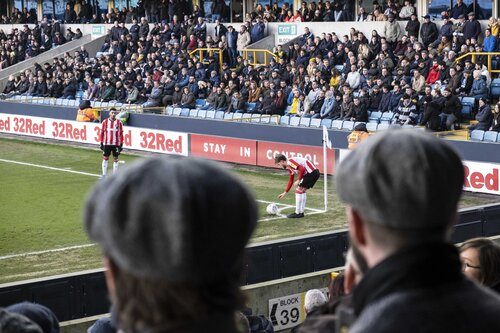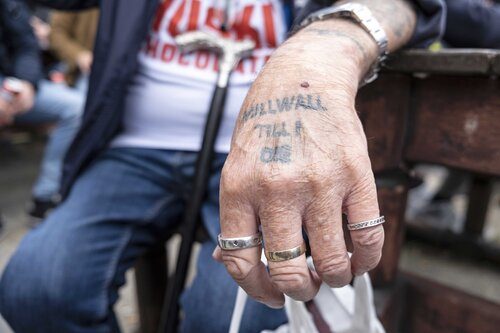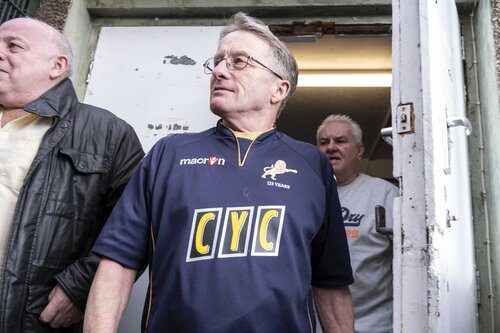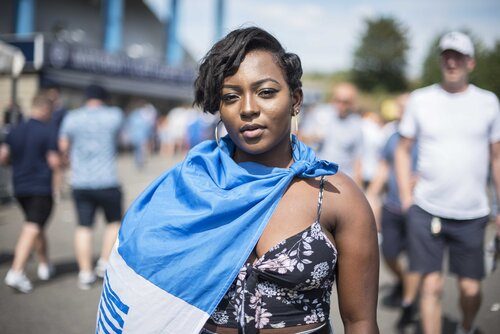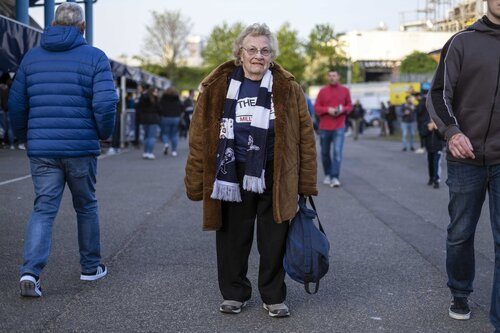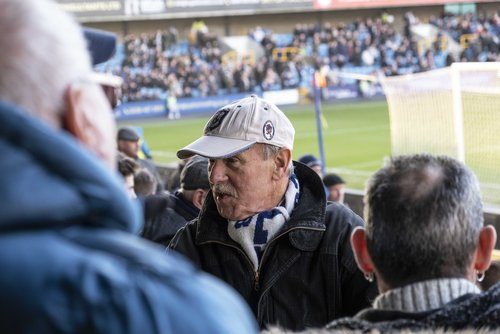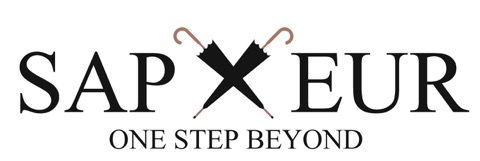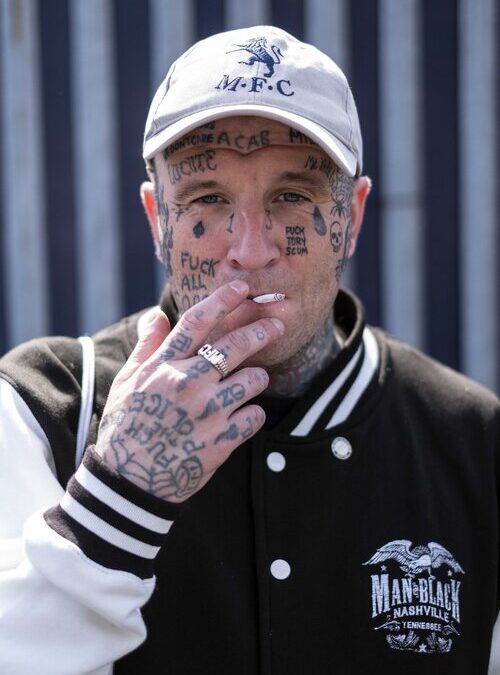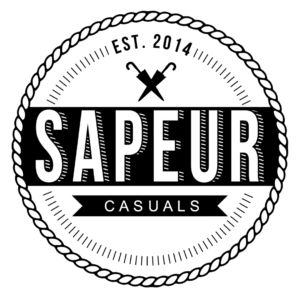Wir sind sehr glücklich darüber euch das zweite Interview in 2022 präsentieren zu können. Hier müssen wir uns zuallererst bei euch bedanken, denn wir haben von einem Leser den Tipp zur Fotoserie „No one likes us“ erhalten. Also bitte keine Scheu uns zu kontaktieren und uns eure Ideen zu Interviews oder auch Podcast Themen durchfunken.
Jérôme Favre ist ein professioneller Fotograf, den es bereits vor Jahren von Frankreich an die Themse gezogen hat. Als leidenschaftlicher Fußballfan hält er es heute mit dem Millwall FC, dessen schlechter Ruf seiner Fans sein Interesse gewonnen hatte. Wir möchten euch heute seine sehr eindrucksvollen Porträts im Umfeld eines Spieltages vom The Den vorstellen.
Da die Fotoauswahl von Jérôme Favre so groß und einzigartig ist, findet ihr in der deutschen Übersetzung und im englischen Original unterschiedliche Bilder.
— For the interview in English please scroll down —
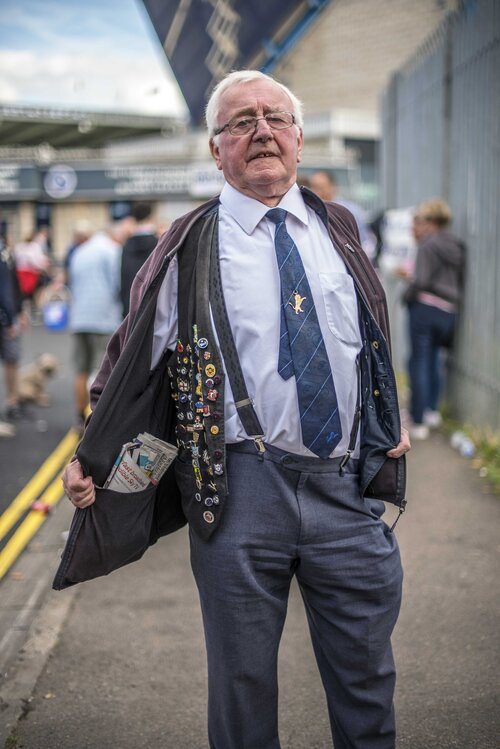
Gude Jérôme! Es ist sehr schön, dass Du bei uns sind. Stell dich doch bitte einmal kurz unseren Lesernvor.?
Hey, ich bin Jérôme. Ich bin ein französischer Fotograf, der im Südosten Londons lebt.
Bevor wir auf Millwall zu sprechen kommen, würde ich gerne wissen, ob du ein Hobby- oder Berufsfotograf bist?
Ich bin ein professioneller Fotograf.
Wann sind bist du vom beschaulichen und schönen Lille in die hektische Metropole London gezogen? Und war es wegen der Arbeit?
Ich bin im Jahr 2005 nach London gezogen. Ich habe Ende der 90er Jahre in England studiert und wollte schon immer in London leben und arbeiten. Ich liebte die Kultur, die Energie und die Offenheit der Hauptstadt und war auf der Suche nach neuen Abenteuern.
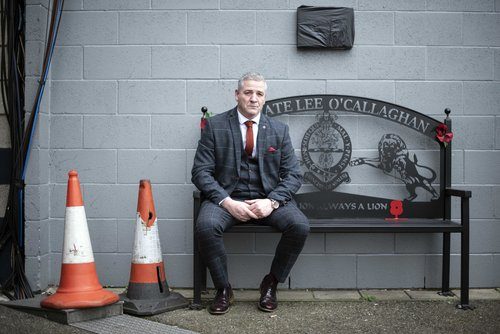
Neben deinem Heimatverein, dem Racing Club Lens, bist Anhänger der Lions aus dem Süden Londons. Millwall ist nicht gerade ein Verein, der international für Furore gesorgt hat. Wie bist du mit dem Verein in Kontakt gekommen und wie lange verfolgst du schon die Spiele?
Ich wohne in New Cross, und Millwall ist der örtliche Verein. Da ich ein großer Fußballfan bin, hat mich das natürlich gereizt. Es gibt auch einige Parallelen zwischen meinem Heimatverein und dem Millwall FC: Beide wurden von großen Unternehmen gegründet. Lens von einem großen Kohlebergbauunternehmen, Millwall von der Konservenfabrik JT Morton’s, um den Gemeinschaftssinn ihrer Belegschaft zu fördern. Beide sind immer noch richtige Arbeitervereine. Ich bin von der Fußballkultur fasziniert, und die Tatsache, dass Millwall einen schlechten Ruf hat, war auch ein Anreiz für das Fotoprojekt.
Kannst du dich noch an dein erstes Live-Spiel von Millwall im New Den erinnern? Wann war das und wie war es?
Ja, ich habe mir 2013 das Spiel Millwall gegen Derby County angesehen. Ich saß mit meinem Kumpel, der Derby-Fan ist, auf der Derby-Seite im Gästeblock. Millwall hat 5:1 verloren, es gab ein paar Zwischenfälle abseits des Spielfelds. Wir wurden durch einen Tunnel zum Bahnhof South Bermondsey eskortiert, nachdem die Heimfans das Stadion verlassen hatten – also vielleicht nicht der beste Eindruck, es war tatsächlich ziemlich einschüchternd!
Wie würdest deinen alten Freunden in Lille die Mentalität des Vereins und der Fanszene beschreiben?
Ich würde den Verein als einen Gemeinschaftsklub bezeichnen, im Gegensatz zu vielen anderen Vereinen der Premier League heutzutage. Es gibt ein echtes Gefühl der Gemeinschaft und Zugehörigkeit, das anderswo mit der Gentrifizierung des Fußballs verschwunden ist.
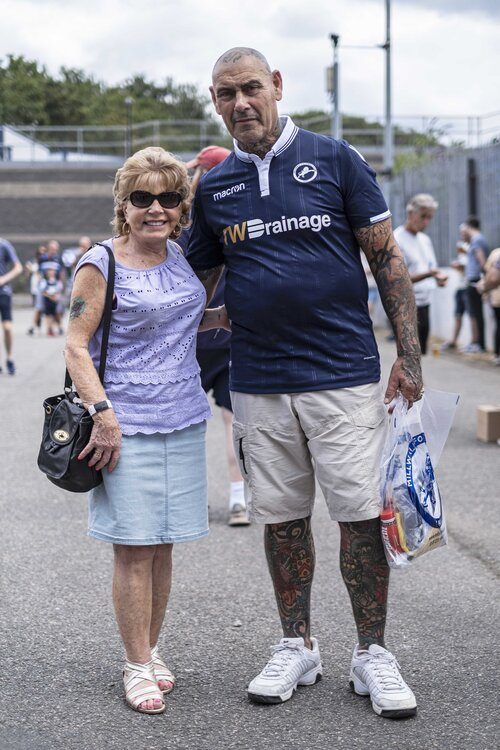
Jérôme, hast du Lust unseren Lesern von deinen interessantesten Erfahrungen mit dem Verein oder der Fanszene erzählen?
Ich würde nicht sagen, dass es ein bestimmtes Erlebnis gibt, sondern dass ich jedes Mal, wenn ich zu einem Spiel gehe, Menschen treffe und mir ihre Geschichten anhöre. Das ist es, was ich liebe und was ich weitergeben möchte.
Folgst du Millwall auch bei den Auswärtsspielen?
Ich war bei ein paar FA-Cup-Auswärtsspielen.
Wie du vielleicht weißt, hat Sapeur – One Step Beyond seinen Einfluss durch die Casual Culturer. Hast du irgendwelche Kontakte zu dieser Subkultur?
Ich denke, dass die Fußballvereine der Arbeiterklasse heute eine Art Subkultur bilden, eine Minderheit an der Basis, in der Fußball immer noch eher kulturell als transaktional ist.
Wie in der Einleitung erwähnt, hatte mich einer unserer Leser dankenswerterweise auf „No One Likes Us“ hingewiesen. Was war deine Intention mit dieser großartigen Fotoserie?
Ich wollte eine eindringliche Fotodokumentation über die Welt des Millwall FC erstellen. Ich war fasziniert von der Tatsache, dass Millwall ein Club der Arbeiterklasse war und immer noch ist, was in London und generell im ganzen Land eine Seltenheit ist. Es ist ein frischer und ehrlicher Blick auf die Millwall-Fans, der ihren Ruf in der heutigen Fußballkultur neu bewertet.
Gab es eine Reaktion seitens des Vereins oder der Fanszene?
Vom Verein eigentlich nicht, aber es gab ein gewisses Interesse von Seiten der Fans und von Fußballkultur-Bloggern.
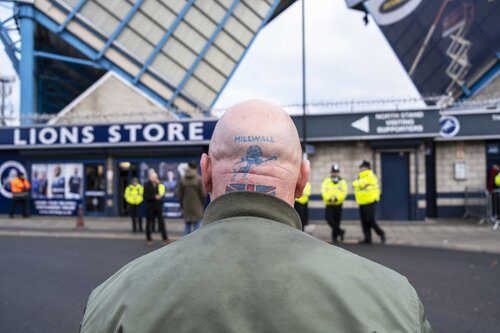
Welches ist dein persönliches Lieblingsbild von „No One Likes Us“?
Das Bild des Skinheads vor dem Stadion, mit einem Millwall-Löwen und einem Union-Jack-Tattoo!
Auf welche deiner anderen Fotoarbeiten bist du besonders stolz?
Ich bin stolz auf meine Porträtarbeiten im Allgemeinen, ob auf der Straße oder im Studio.
Hier sei vor allem „Peckhamites“ genannt, die mir ebenfalls sehr gut gefällt. Jérôme, kurz vor dem Ende noch ein paar kurze Fragen. London steht bei uns und unseren Lesern immer hoch im Kurs. Und da du schon seit vielen Jahren dort lebst, sind wir neugierig darauf zu erfahren, welche deine Lieblingsecken sind:
Pub: Skehan’s, eine wunderbare irische Kneipe in Nunhead
Einkaufen: Das spektakuläre Khan’s in Peckham
Restaurant: Kudu, ein brillant kreatives südafrikanisches Restaurant in Peckham
Bar: Watergate in Deptford
Kultur: White Cube Galerie in Bermondsey
Jérôme, vielen Dank für deine Zeit und das Interview mit uns. Gibt es noch etwas, das du unseren Lesern sagen möchtest?
Die Kultur eures Vereins ist genauso wichtig, wenn nicht sogar wichtiger als die Spielergebnisse eures Vereins. Stellt sicher, dass ihr sie schützt.
Wer mehr zu Jérôme Favre und seinen Fotoarbeiten erfahren möchte
Homepage
Instagram
— The Interview in English —
We are very happy to present you the second interview in 2022. First of all, we have to thank you, because we received a hint from a reader about the photo series „No one likes us“. So please don’t be shy to contact us and send us your ideas for interviews or podcast topics.
Jérôme Favre is a professional photographer who moved from France to the Thames years ago. As a passionate football fan, he now keeps up with Millwall FC, whose bad reputation of its fans had won his interest. Today we would like to present you his very impressive portraits in the context of a match day at The Den.
Since Jérôme Favre’s photo selection is so large and unique, you will find different pictures in the German translation and in the English original.
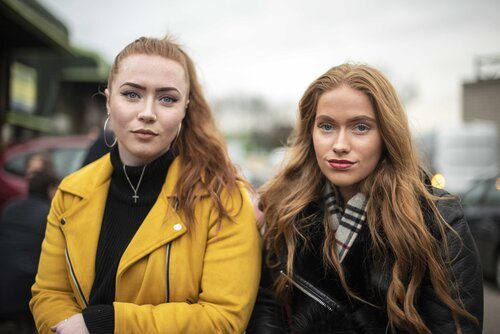
Salut Jérôme, it’s nice to have you with us. Please introduce yourself briefly to our readers?
Hey, I’m Jérôme, I’m a French photographer based in Southeast London
Before we get into Millwall, I would like to know if you are a hobby or professional photographer?
I’m a professional photographer
When did you move from tranquil and beautiful Lille to the hectic metropolis of London? Was it for work?
I moved to London in 2005. I went to university in England in the late 90s and I’d always wanted to live and work in London – I loved the culture, the energy and the openness of the capital, and I was seeking new adventures.
Apart from your home club, Racing Club Lens, you are a supporter of the Lions from south London. Millwall is not exactly a club that had made a splash internationally. How did you get involved with the club and how long have you been following the matches?
I live in New Cross, and Millwall is the local club. As a huge football fan, I was naturally attracted. There are some parallels between my home club and Millwall FC too: both were set up by big companies (a large coal mining company for Lens, The JT Morton’s canning and preserve factory for Millwall) to encourage a sense of community with their workforce. Both are still proper community, working class clubs. I’m fascinated by football culture and the fact that Millwall suffers from a bad reputation was also a draw in terms of the photography project.
Can you remember your first live Millwall game at the New Den? When was it and what was it like for you?
Yes I went to see Millwall v Derby County in 2013. I sat in the Derby end with my mate who’s a Derby fan. Millwall lost 5-1, there were a couple of incidents off the pitch, and we were escorted via a tunnel to South Bermondsey station after the home fans left the stadium – so maybe not the best impression, it was rather intimidating in fact!
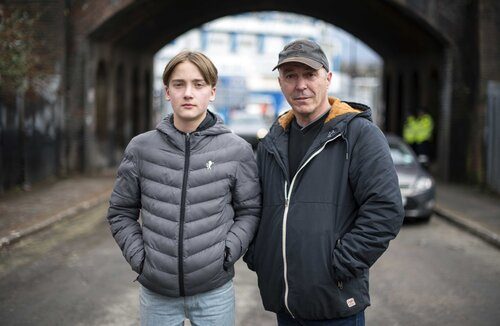
How would you describe the mentality of the club and the fan scene to your old friends in Lille?
I would describe it as a community club, unlike a lot of Premier League clubs nowadays. There’s a genuine sense of community and belonging that has disappeared elsewhere with the gentrification of football.
Jérôme, would you like to tell our readers about your most interesting experiences with the club or fan scene?
I wouldn’t say there’s a particular experience, it’s meeting with people every time I go to the game and listening to their story – that’s what I love, and that’s what I want to convey.
Do you follow Millwall for the away games?
I went to a couple of FA Cup away games.
As you might know, Sapeur – One Step Beyond has its influence through casual culture. Do you have any contact with the subculture?
I think working class football clubs now form a type of subculture, they are a grassroots minority where football still feels cultural rather than transactional.
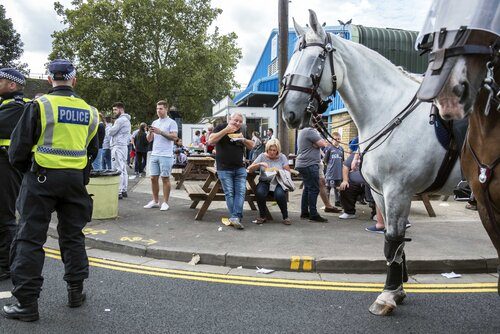
As mentioned in the introduction, one of our readers had thankfully pointed out „No One Likes Us“ to me. What was your intention with the great photo series?
I wanted to create an immersive photo-documentary inside the world of Millwall FC. I was fascinated by the fact that Millwall was, and still is, a working-class club, which is a rare thing in London, and across the country in general. It’s meant a fresh and honest look at Millwall supporters that re-evaluates their reputation in contemporary football culture.
Was there any response from the club or the fan scene?
Not much from the club, but there has been some interest from the fans and from football culture bloggers.
What is your favourite „No One Likes Us“ picture?
It’s the picture of the skinhead facing the stadium, with a Millwall Lion and a Union Jack tattoo!
Which of your other photo works are you particularly proud of?
I’m proud of my portraiture work in general, whether in the street or in the studio.
Just before the end, a few quick questions. London is always high on the agenda for us and our readers. And since you’ve still lived there for many years, we’re curious about your favourite corners of London:
Pubs: Skehan’s, a wonderful Irish boozer in Nunhead
Shopping: The spectacular Khan’s, Peckham
Restaurant: Kudu, a brilliantly creative South-African restaurant in Peckham
Bar: Watergate in Deptford
Culture: White Cube Gallery in Bermondsey
Jérôme, thank you very much for your time and the very nice interview. The end of the interview is yours. What would you like to say to our readers?
Your club’s culture is equally, if not more important than your club’s results. Make sure you protect it.
Those of you who would like to know more about Jerome and his photographic work
Homepage
Instagram
